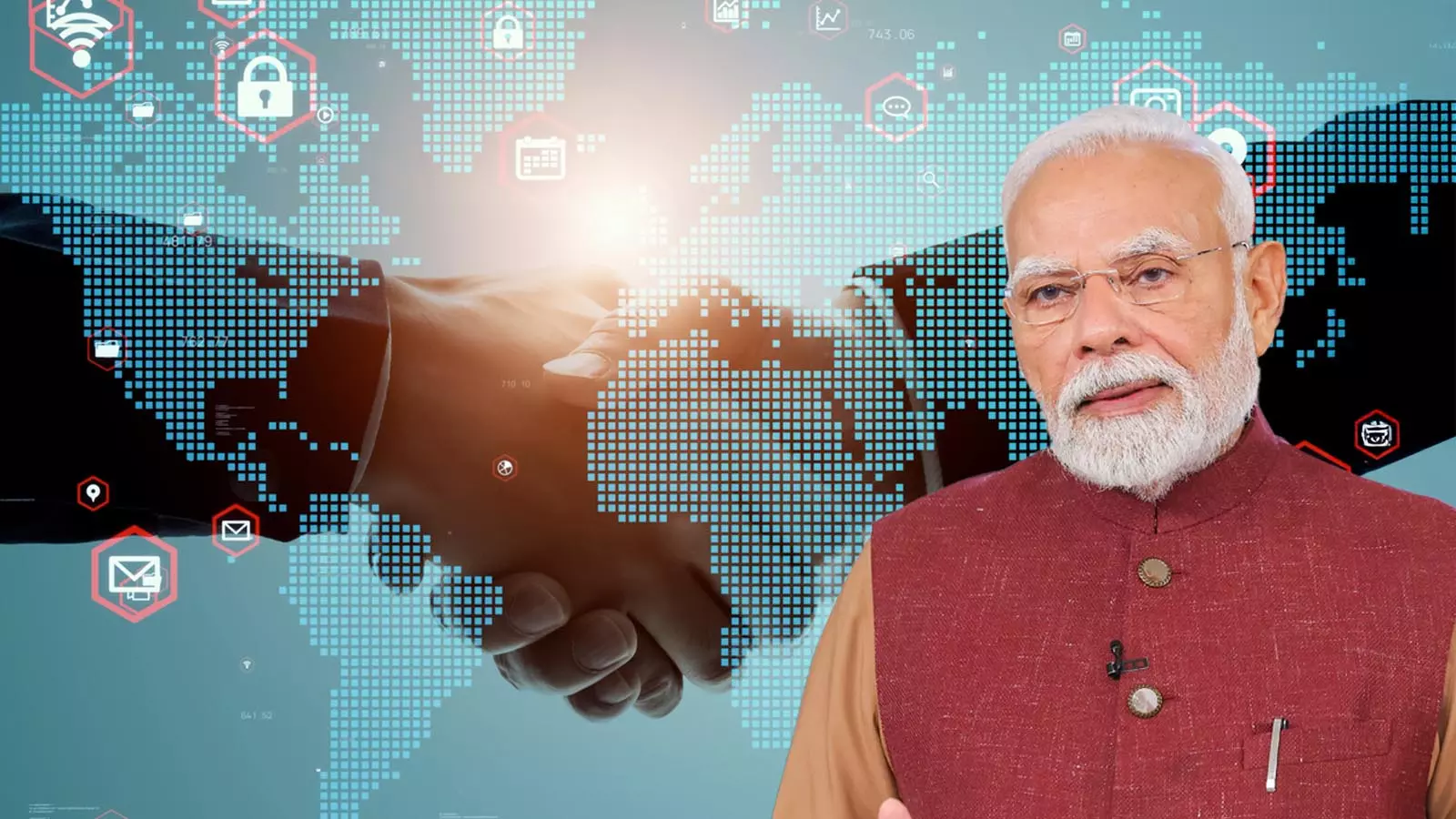
- Home
- India
- World
- Premium
- THE FEDERAL SPECIAL
- Analysis
- States
- Perspective
- Videos
- Sports
- Education
- Entertainment
- Elections
- Features
- Health
- Business
- Series
- In memoriam: Sheikh Mujibur Rahman
- Bishnoi's Men
- NEET TANGLE
- Economy Series
- Earth Day
- Kashmir’s Frozen Turbulence
- India@75
- The legend of Ramjanmabhoomi
- Liberalisation@30
- How to tame a dragon
- Celebrating biodiversity
- Farm Matters
- 50 days of solitude
- Bringing Migrants Home
- Budget 2020
- Jharkhand Votes
- The Federal Investigates
- The Federal Impact
- Vanishing Sand
- Gandhi @ 150
- Andhra Today
- Field report
- Operation Gulmarg
- Pandemic @1 Mn in India
- The Federal Year-End
- The Zero Year
- Science
- Brand studio
- Newsletter
- Elections 2024
- Events
- Home
- IndiaIndia
- World
- Analysis
- StatesStates
- PerspectivePerspective
- VideosVideos
- Sports
- Education
- Entertainment
- ElectionsElections
- Features
- Health
- BusinessBusiness
- Premium
- Loading...
Premium - Events

While New Delhi has played quiet diplomacy and has been on the margins of peacemaking activities, it has never formalised mediation as a foreign policy tool
The unprecedented recent clashes between the Taliban-led Afghanistan and Pakistan came to a halt following mediation by Qatar, adding to the successful list of conflicts mediated by the tiny Gulf state. And, there’s a new mediating kid on the block, too — China.
This begs the question: Why can’t India take up a similar role? It may be tempting to be dismissive of such a possibility, but in many ways, New Delhi is well-suited to don the robes of a peacemaker. Other than Pakistan and to some extent China, India has a history of trying to keep peace with everyone. Prima facie, it does not threaten any nation, though its immediate neighbours in South Asia do feel intimidated by its size and consequent domination.
Also read: Iron fist and velvet glove: Inside India’s Chanakyan strategy against Naga insurgents
Despite no particular obstacle, governments in New Delhi — the present one and its predecessors together — have never directly attempted to mediate in third-party conflicts globally, though they could have.
India's position on Russia-Ukraine war
Take the Russia-Ukraine war that began in February 2022. At the time, India was perfectly positioned to play the role of mediator. In fact, several reports made note of the unique position New Delhi was in. Some lollipops, too, were thrown in — like a possible Nobel Peace Prize for Prime Minister Narendra Modi, if he successfully mediated between the two.
Indian governments, historically and politically, either suffer from a deep-seated inferiority complex or that a mediating mindset has never been part of New Delhi’s foreign policy strategy. Just after Independence, India was well suited to don a mediator's mantle, given the respect leaders such as Mahatma Gandhi and Jawaharlal Nehru commanded globally. That potential remained only on paper.
India’s relationship with both Russia and Ukraine was pretty strong, a spinoff from its ties to the erstwhile Soviet Union. When the Soviet Union broke up, India continued to engage with both the offspring nations for its military requirements, for instance.
Modi said 'not an era of war' but nothing beyond that
Moreover, in the initial days of the war, Ukraine and Russia too were predisposed to negotiate and end the fighting. It would have been simpler because Russia had not yet occupied Ukrainian territory; India was by default a neutral party with interests in both countries with strong stakes to see the war end. Modi did visit Vladimir Putin in Moscow and observed that “this is not the era of war”. But that was it. Nothing happened beyond it, and New Delhi did not take any initiative to actively and diplomatically project itself as a mediator.
Also read: Rare earths: Deng Xiaoping's vision, China’s advantage, and India’s race against time
The opportunity slipped out of India’s hands. New Delhi gravitated towards Russia, increasing its oil buys from almost nothing (0.3 per cent of the country’s requirement) to as high as 40 per cent. In the process, the Modi government managed to anger Ukraine’s Volodymyr Zelenskyy government. Harsh words were exchanged between the two and India lost its footing on the pedestal from where it could have played a major role in ending the conflict.
There was no reason why India could not have played mediator. Yet it did not. One cannot help but conclude that Indian governments, historically and politically, either suffer from a deep-seated inferiority complex or that a mediating mindset has never been part of New Delhi’s foreign policy strategy.
There was much talk of India needing to shift from being a “soft state” to one with a “muscular strategy”, especially in 2014 when the Modi dispensation took over. But, this has not happened. If it did, it has been confined only to Pakistan. India, anyway, has a long history of belligerence with its neighbour. It is nothing new.
How other nations emerged as mediators
On the other hand, the Chinese government, waking up to the potential of peace-making, as recently as May 2025, established IOMed (International Organisation for Mediation) headquartered in Hong Kong. It is fashioned as an inter-governmental body comprising at least 20 other member-countries, including Pakistan, which, besides conflict resolution, is tailored to rival the International Court of Justice and the Permanent Court of Arbitration.
As the Ukraine war continued, Modi did visit Vladimir Putin in Russia and remarked that “this is not the era of war”. But that was it. Nothing happened beyond it, and New Delhi did not take any initiative to actively and diplomatically project itself as a mediator.
It is not a coincidence that the precursor to the establishment of IOMed was China’s role in facilitating “reconciliation” between Saudi Arabia and Iran in March 2023 — a move of much significance, given that the rivalry between the two big regional powers had spawned a variety of tensions in the region.
Also read: India should keep buying Russian oil, but not from Rosneft and Lukoil
Riyadh and Tehran had broken their diplomatic relations in 2016, finding themselves on opposite sides of conflicts in Yemen and Syria.
China’s initiative is widely viewed as a test case for its attempt at international mediation and also in competition with the US, which under President Donald Trump, mediated the Abraham Accords that enabled diplomatic relations between Israel and several countries in the Middle East.
Beijing's move is also viewed as a potential challenge to the US-dictated world security and political order.
Rise of Qatar as mediator
Meanwhile, how did Qatar manage to emerge as the big daddy of global mediation? The tiny Gulf nation, for long, was overshadowed by its gigantic big-brotherly neighbour, Saudi Arabia. But, following a change in the country’s regime since the mid-1990s, it broke out on its own – first allying with the US, independent of the Saudis, and creating a major international news channel, Al-Jazeera (disclosure: this writer was part of the team that launched the Al-Jazeera English website in 2003).
Also read: India forgot its idealistic roots when it broke bread with the Taliban
Both jockeyed Doha into a prominent international player, neutralising its otherwise inconsequential presence. In addition, the discovery of a humongous quantity of liquified natural gas turned it into an El Dorado — further cementing its place globally.
Qatar, since it began mediating between Israel and Hezbollah during the 2006 invasion of Lebanon, has played peacemaker in innumerable conflict situations, including the one between the Taliban and the US government, between the US and Venezuela that led to easing of sanctions prior to Trump, and between the US and Iran.
More recently, Doha mediated between Israel and the Palestinian group Hamas for a ceasefire in Gaza. Qatar also mediated between Ukraine and Russia for the release of Ukrainian minors who had reportedly been deported to Russia illegally.
Also read: Clash of titans: How US-China economic cold war is squeezing India
The regime in Doha had to face the wrath of Saudi which imposed an economic blockade on Qatar in conjunction with the United Arab Emirates, Bahrain and Egypt for nearly four years from 2017-21. As recently as last month, Israel controversially targeted Doha with a missile strike, ostensibly to take out key Hamas leaders present there for negotiations.
One reason for the two acts of hostility was suspicion over Qatar’s engagement with Islamic militant groups in the region. Doha’s contention has been that one cannot mediate without engaging with all parties concerned.
Norway's neutrality helped
Earlier, Norway, another small-sized country tucked away in Europe’s Scandinavian region, took upon itself the task of mediating prickly conflicts around the world. To its credit goes the Oslo peace accords of 1993 between Israel and the Palestinians; a six-year truce from 2000-2006 between the Sri Lankan government and the Tamil Tigers during the civil war for Eelam; and in 2021, between the ruling Maduro regime in Venezuela with the country’s opposition that enabled the 2024 presidential elections.
Also read: Modi’s ‘promise’ to Trump, an evasive MEA, and a fresh opportunity for Rahul
Norway, again, was well placed to don the suit of peacemaker as it was neutral, keeping away from the manipulations of the two superpowers, the US and the erstwhile Soviet Union. The conflicting parties did not have any reason to suspect Norway’s political fidelity. Before Norway was Switzerland, which remained neutral during the Second World War (1939-45), enabling it to host several mediation efforts in Geneva during this period.
In the early years after Independence, India was well suited to don the role of a mediator, given the respect its leaders such as Mahatma Gandhi and Jawaharlal Nehru commanded around the world. That potential remained only on paper.
Much later, though India played quiet diplomacy and was on the margins of peacemaking activities, it never formalised mediation as a tool of its foreign policy. India has contributed substantial troops for the United Nations' peacekeeping activities around the world.
India's Sri Lanka disaster
And, the one time when New Delhi actively intervened to negotiate between Tamil rebels and the Lankan government, it turned disastrous — after the Rajiv Gandhi government sent peace-keeping troops to Sri Lanka in 1987 as part of the Indo-Sri Lankan accord. The troops had to be withdrawn two years later, ending India’s active intervention in the island-nation. That did not prevent Indian diplomats from being active in back-channel negotiations when Norway mediated a truce between the Tamil Tigers and the Sri Lankan government in the early 2000s.
Also read: What’s behind Yunus’ anti-India tirade? Fear of Awami revival, power goals
New Delhi also reportedly played a marginal role in helping the Afghan government when the US negotiated with the Taliban that ended Washington’s occupation of Afghanistan in 2021.
But these actions don’t qualify India as a full-fledged, independent mediator. For one, that would involve structural changes in the external affairs ministry. Qatar has institutionalised mediation as part of its foreign ministry, with specific officials solely involved in this activity.
Norway, too, works on mediation through its foreign ministry in conjunction with the Peace Research Institute Oslo (PRIO) and the Norwegian Centre for Conflict Resolution (NOREF). China’s IOMed consists of a governing council, a secretariat and two panels of mediators.
Clearly, the ability to mediate is no longer just about peace-making. It's a badge that makes it possible for a nation to punch above its weight, making for honourable optics, prestige and other incalculable geopolitical advantages.
The Modi government and its foreign office mandarins, as yet, don’t seem to have smelt the possibilities that have the potential to transit the country from a wannabe “vishwaguru” to its more genuine version.


